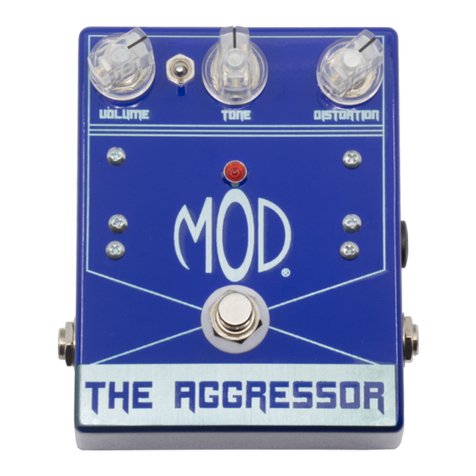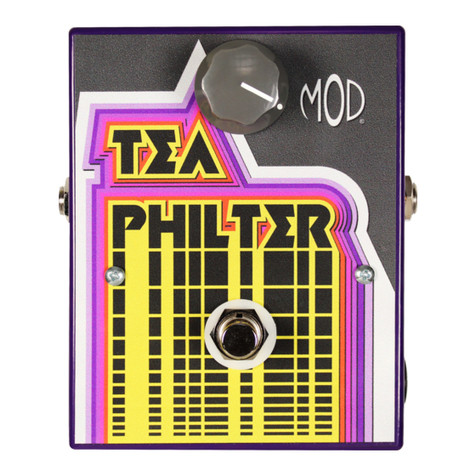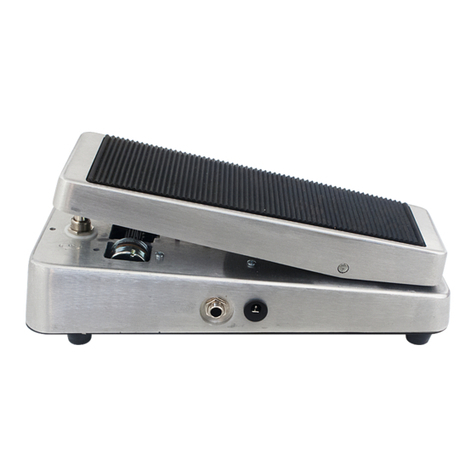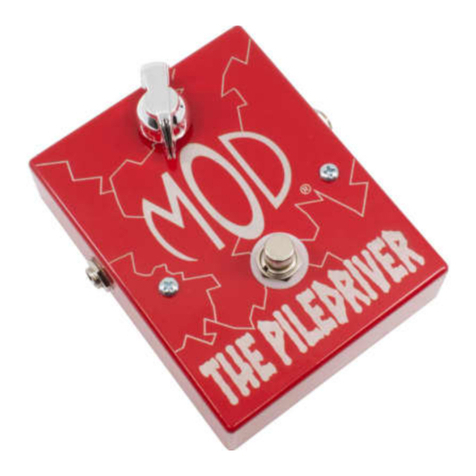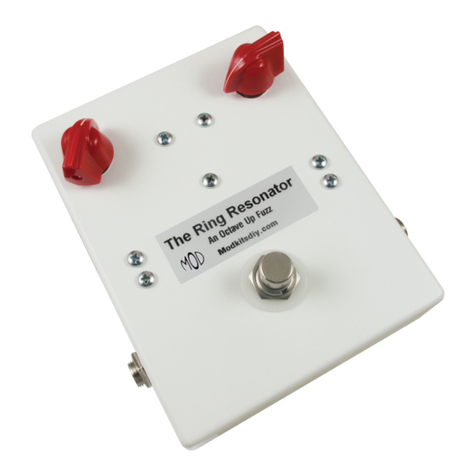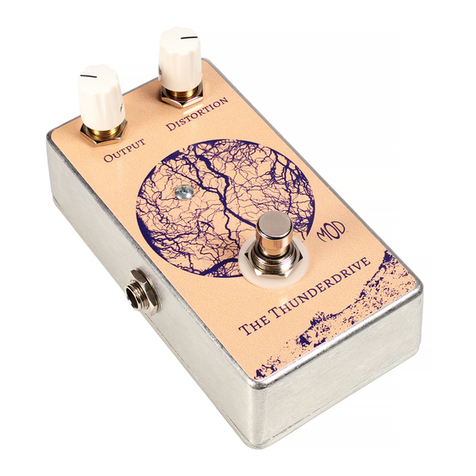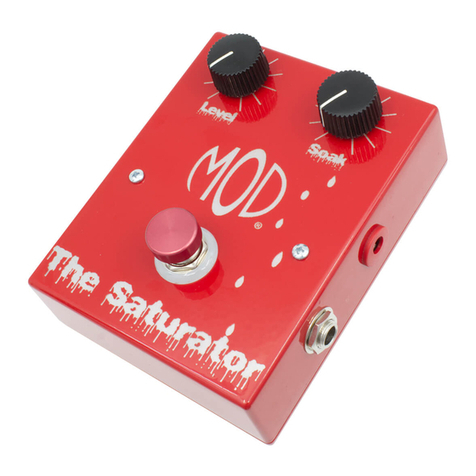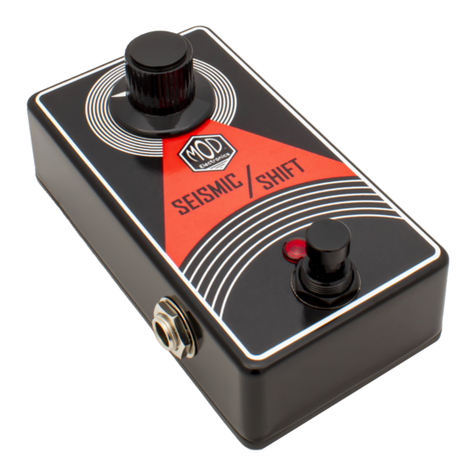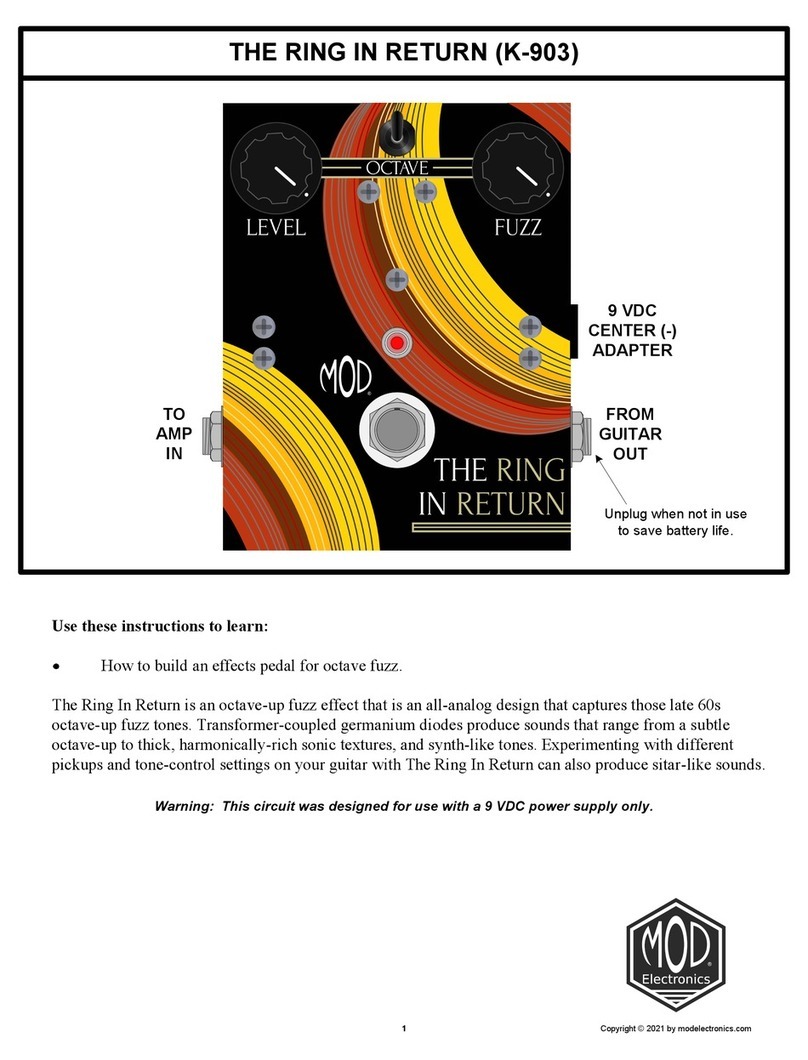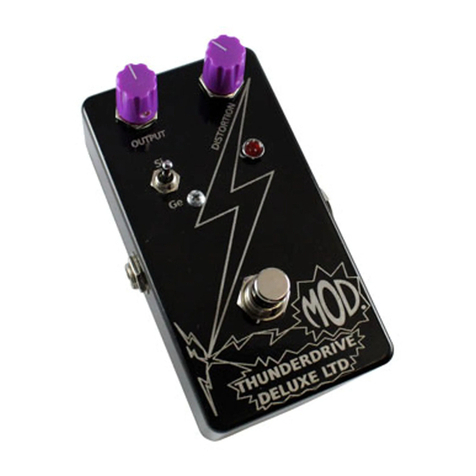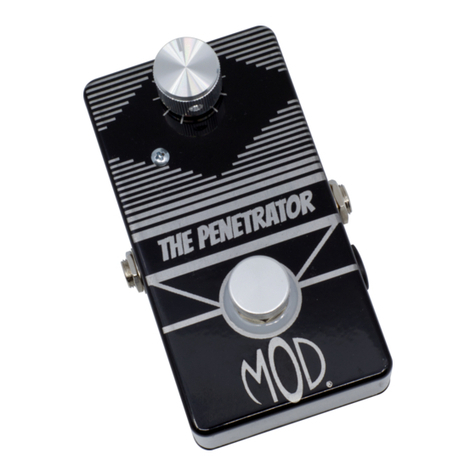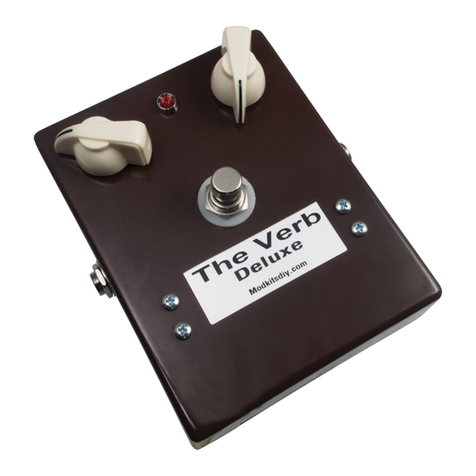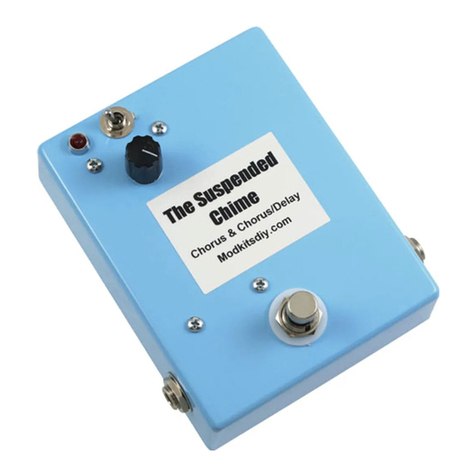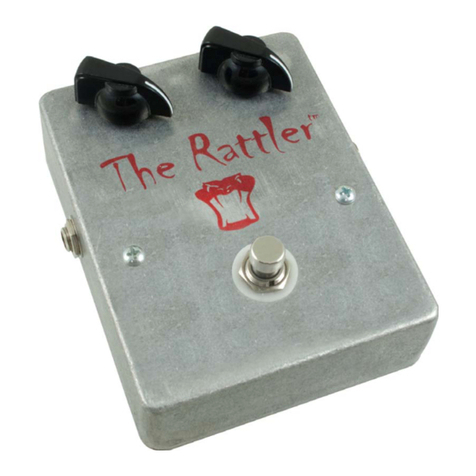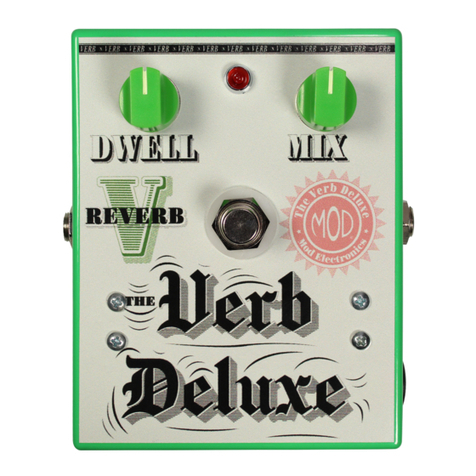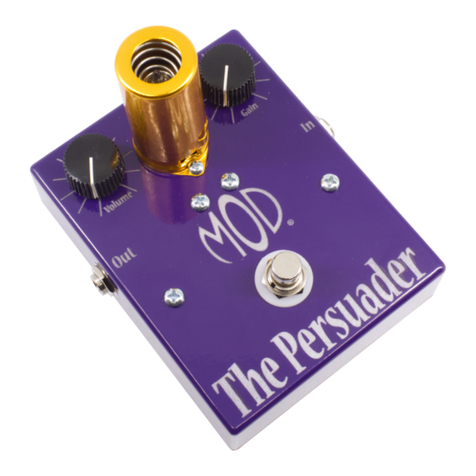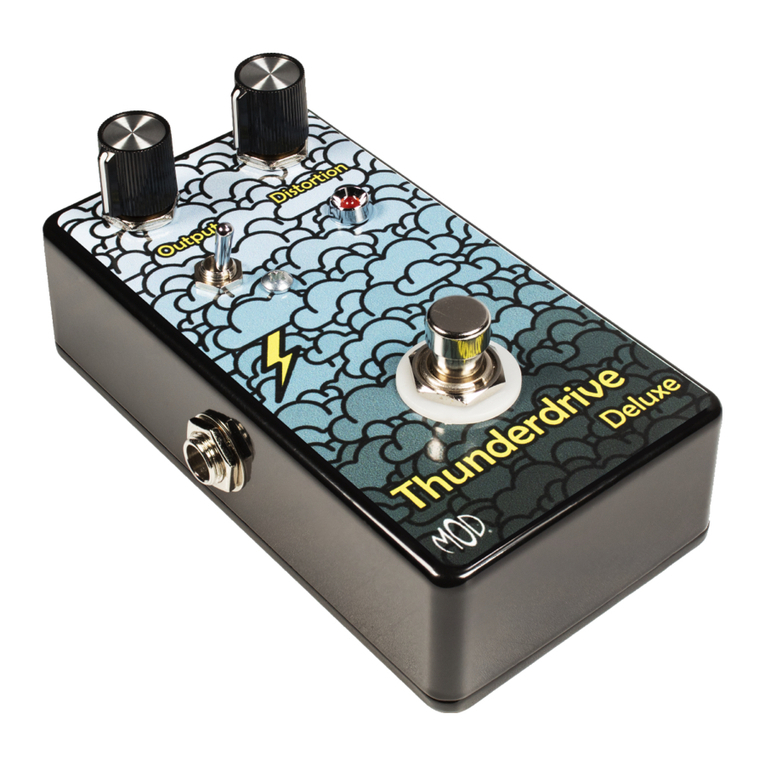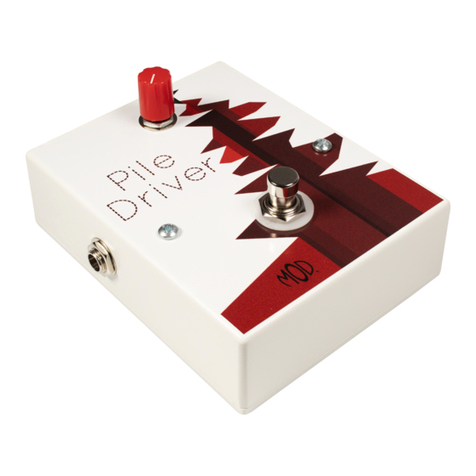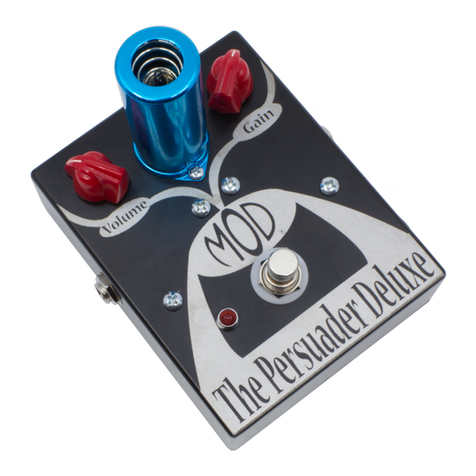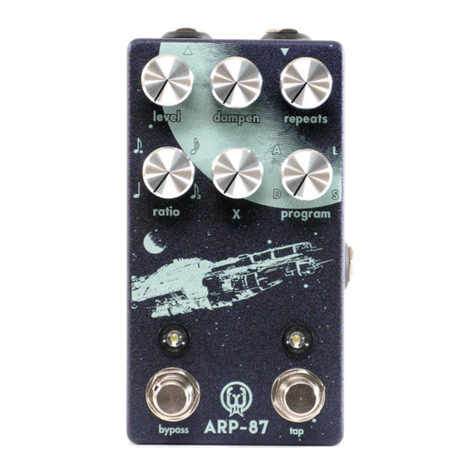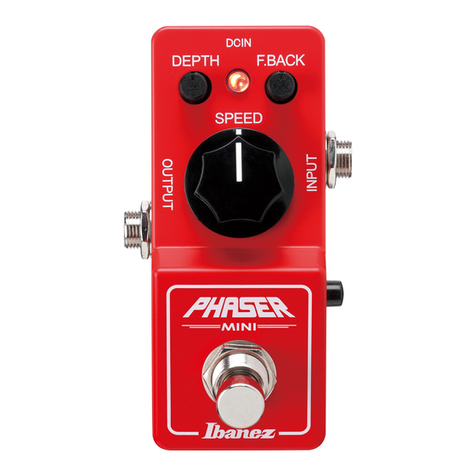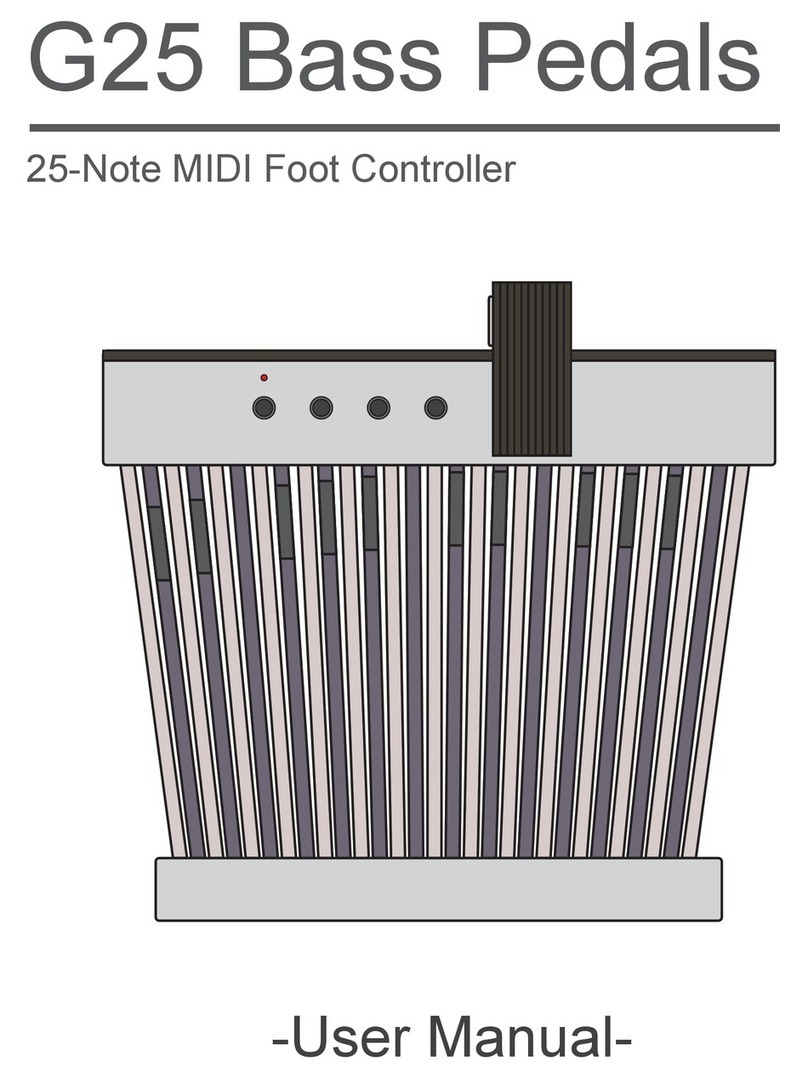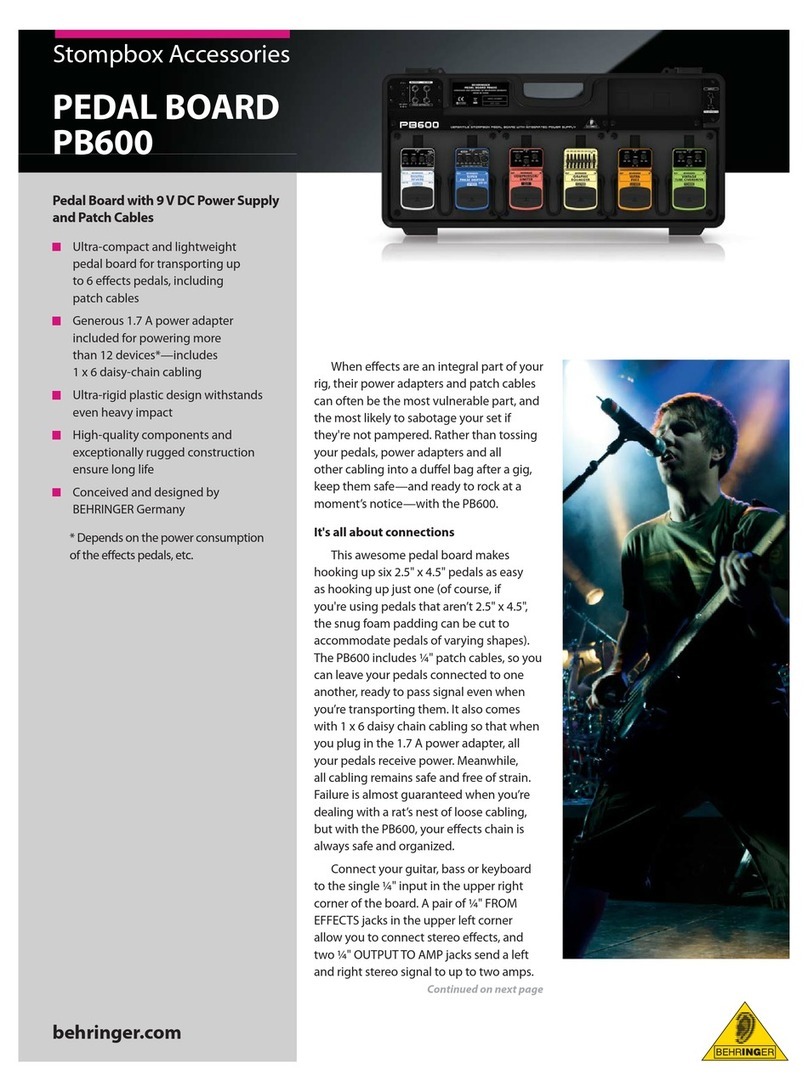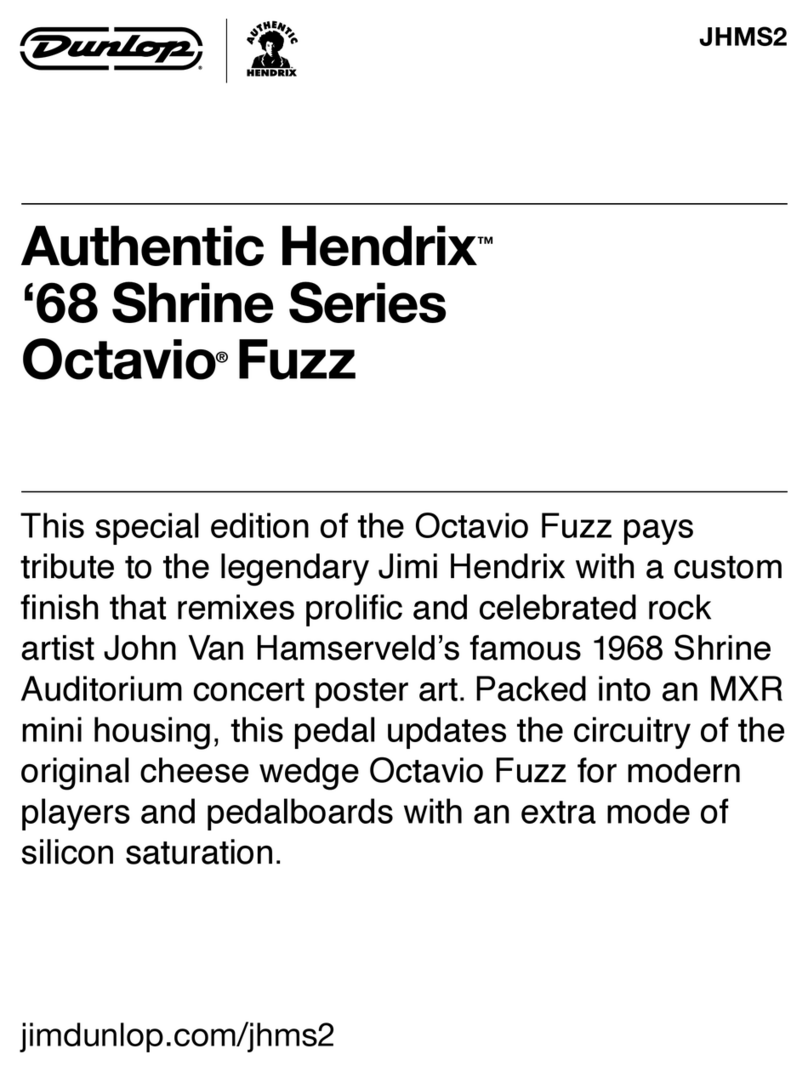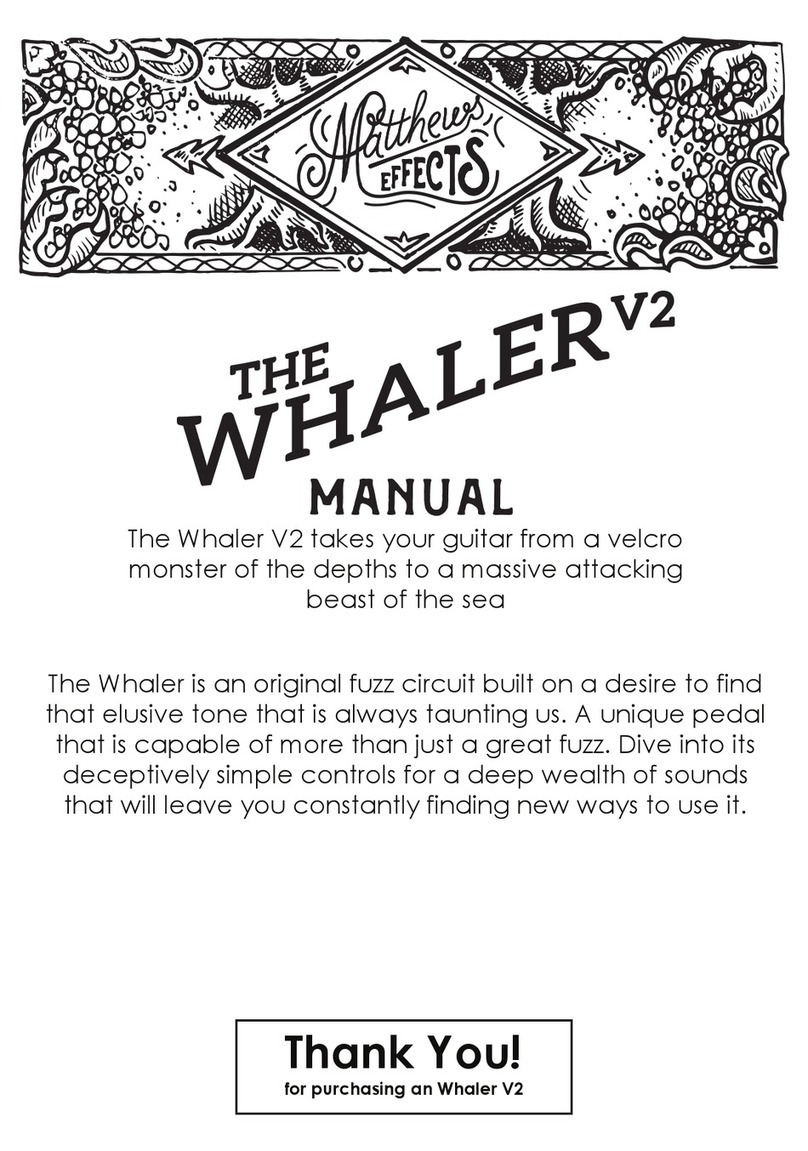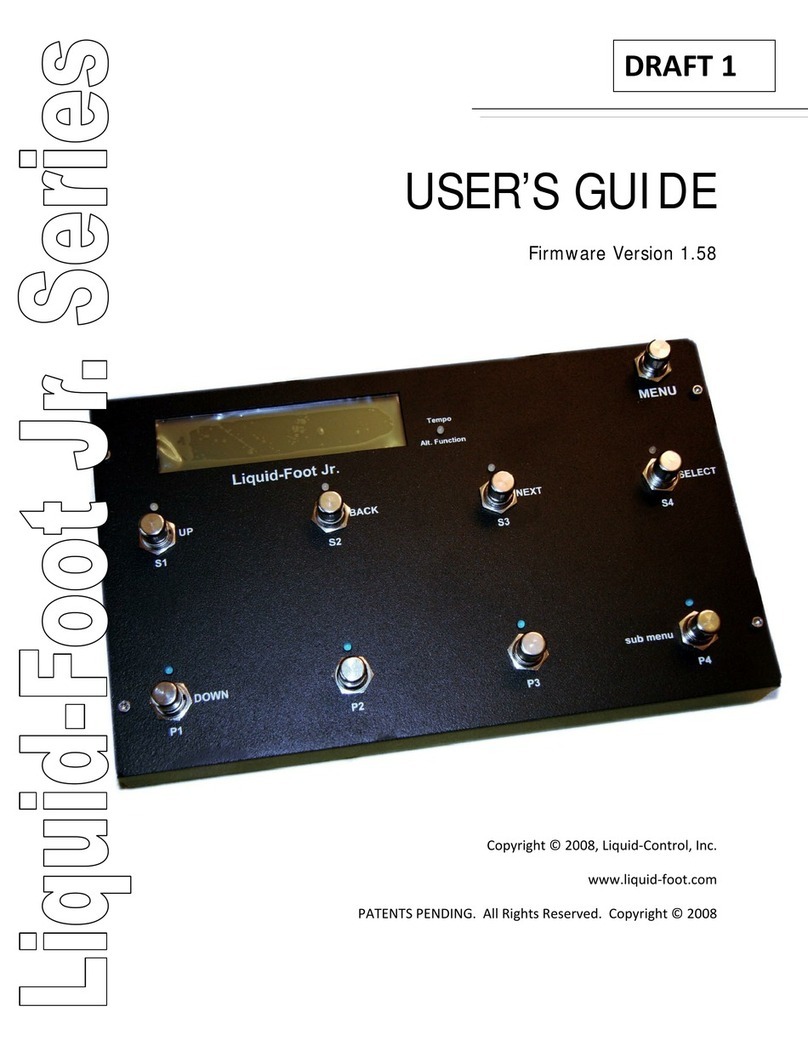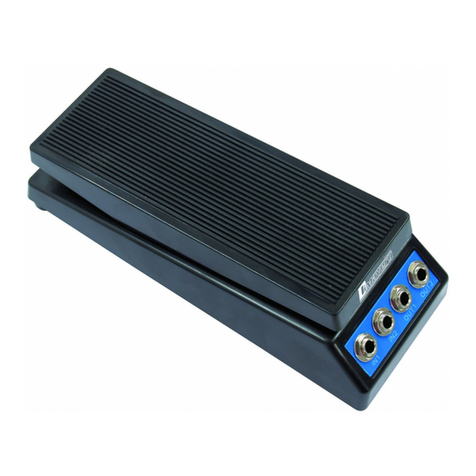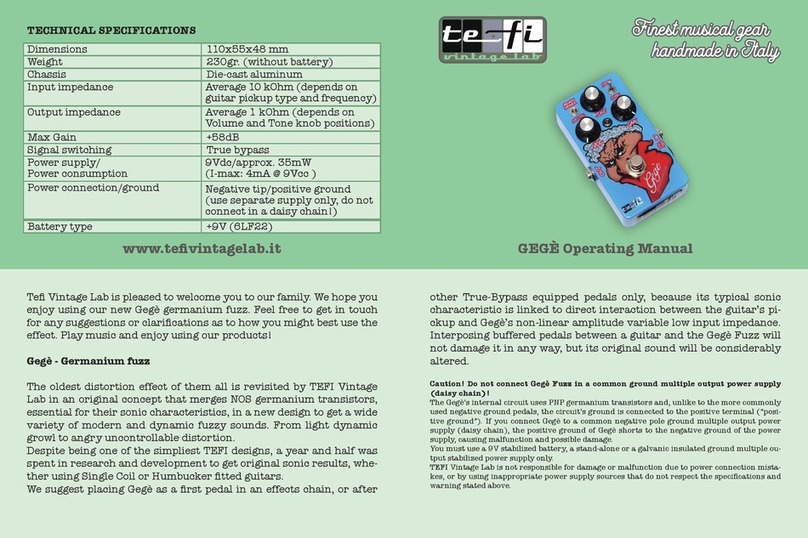
10
Locate the battery clip. Connect the red wire to the positive-switch lug of the DC power jack.
Connect the black wire to the ring lug of the input jack. Solder both connections now.
Connect a 2N5088 transistor to #11, #10, and #9. Make sure the
flat side of the transistor is facing up with the body pointing towards
the footswitch. The orientation must match drawing 7. Solder
connections on #11 and #9 now.
#9: Emitter
#10: Base
#11: Collector
2N
5088
EBC
SECTION 8
Attach the knobs provided to the potentiometer shafts. Install a 9 volt battery, close the cover using
the screws provided (battery not required when using 9v DC power supply). Plug a guitar into input
jack on right. This turns the unit on. Plug a cable into output jack and plug it into your amplifier.
-Unplug from the input jack of the unit to turn it off and save power.
It’s always a good idea to thoroughly double-check your connections before applying power.
Connect a 0.01µF capacitor from #5 to #14.
Connect a 0.01µF capacitor from #14 to #12.
Connect a 1M resistor from #5 to #6.
Connect a 1M resistor from #12 to #11.
SECTION 7
Please refer to DRAWING 8.
Connect a 2N5088 transistor to #16, #15, and #14. Make sure the
flat side of the transistor is facing down with the body pointing
towards the footswitch. The orientation must match drawing 8.
Solder connections on #16, #15, and #14 now.
#16: Emitter
#15: Base
#14: Collector
2N
3906
CBE
Connect a diode from #5 to #7 with the black band connecting to #5. Solder connection at #5 now.
Connect a diode from #12 to #10 with the black band connecting to #12. Solder both connections now.
Connect a 2N5088 transistor to #6, #7, and #8. Make sure the flat
side of the transistor is facing down with the body pointing towards
the pots. The orientation must match drawing 8. Solder
connections on #6, #7, and #8 now.
#6: Emitter
#7: Base
#8: Collector
2N
3906
C B E
black band
SECTION 6
Please refer to DRAWING 7.
Connect a 2N5088 transistor to #1, #2, and #3. Make sure the flat
side of the transistor is facing up with the body pointing towards
the pots. The orientation must match drawing 7. Solder
connections on #1, #2, and #3 now.
#1: Emitter
#2: Base
#3: Collector
2N
5088
E B C
SECTION 5
Please refer to DRAWING 6.
Connect a 330pF capacitor from #7 to #11.
Connect a 330pF capacitor from #6 to #10. Be careful not to short these two capacitors.
Connect the 680k resistor from #19 to lug 1 of the left 100KA pot. Solder both connections now.
Connect a 240k resistor from #22 to lug 1 of the right 100KA pot. Solder both connections now.
1 2 3 4 5 6 7 8
14 13 12 11 10 91516
18 19 20 21 22 23 2417
123
Finishing Up
